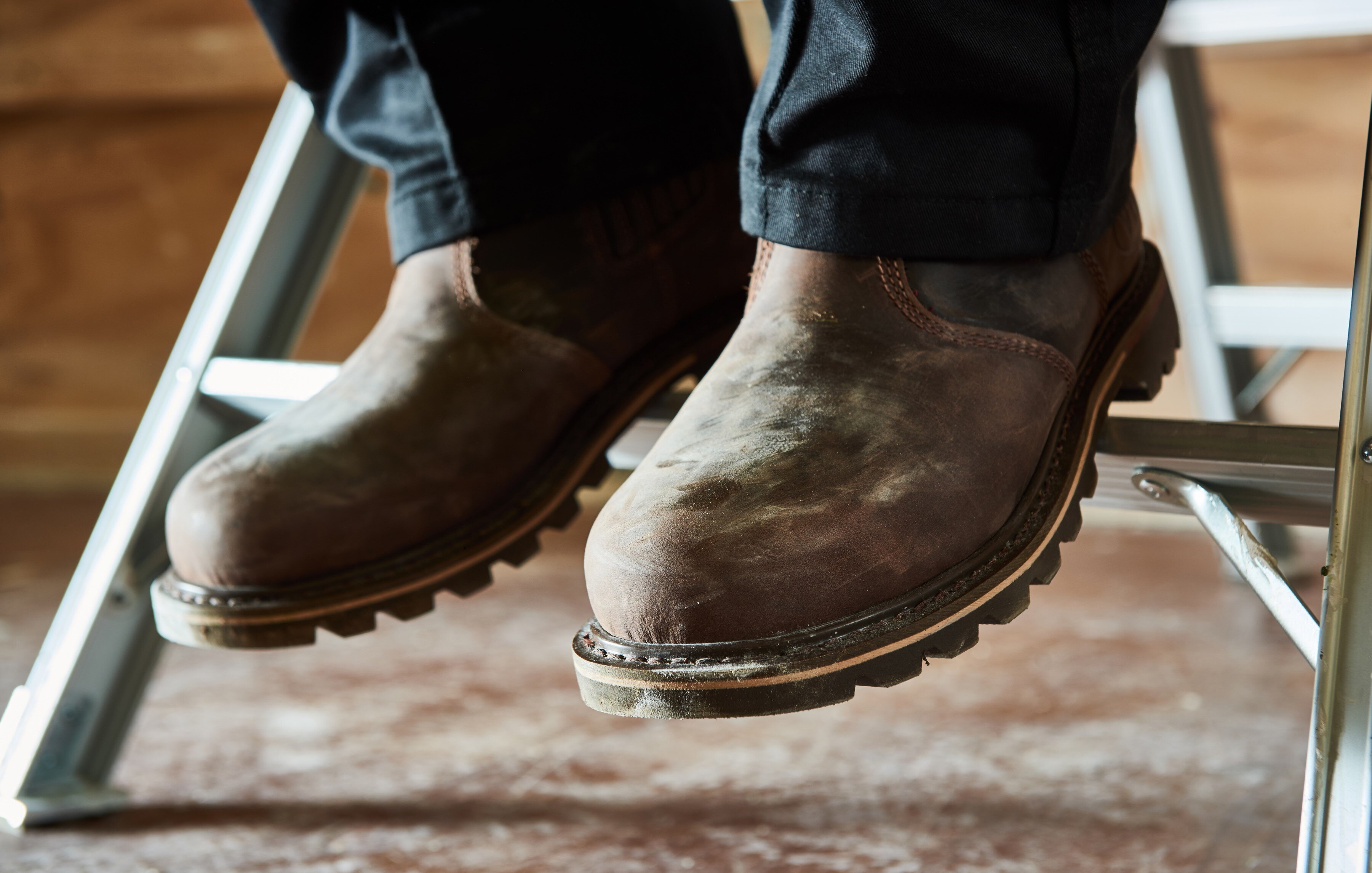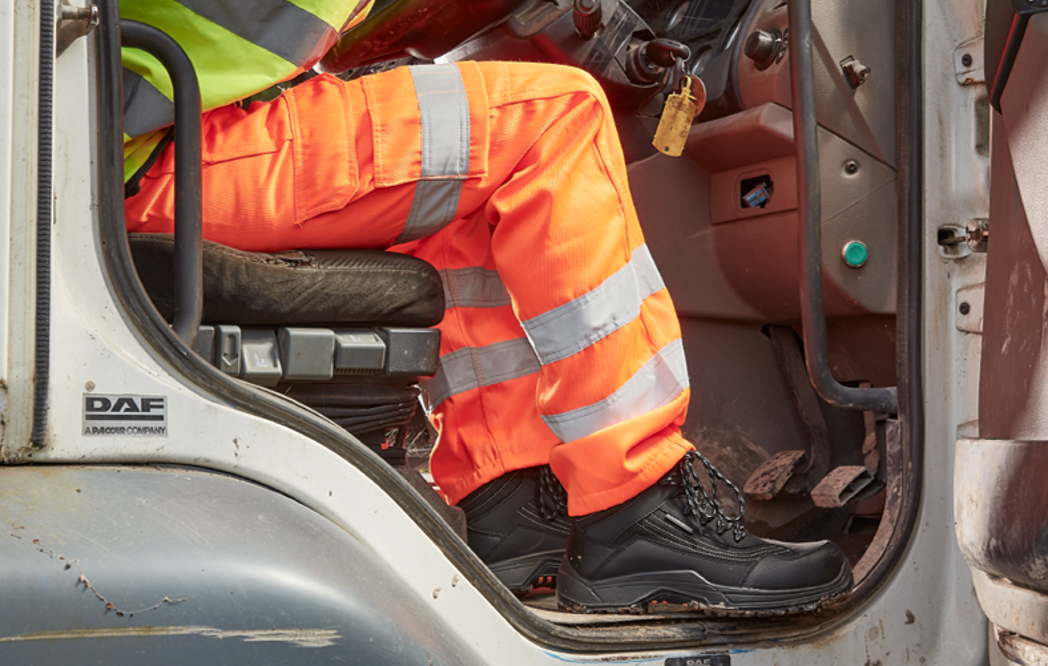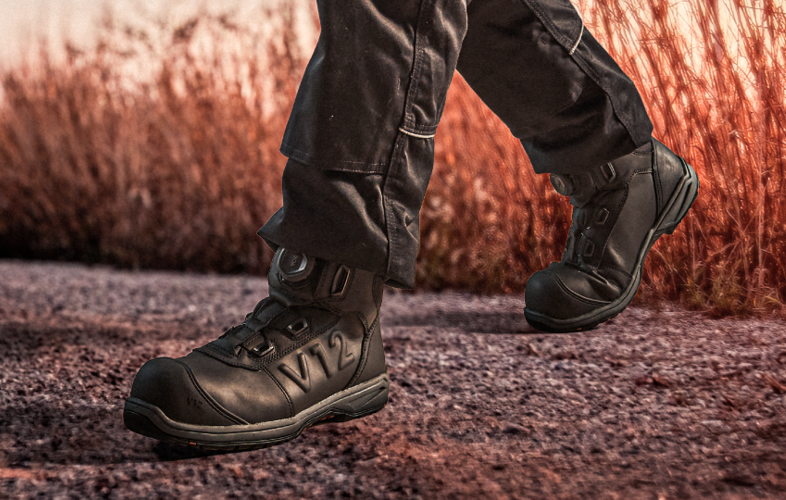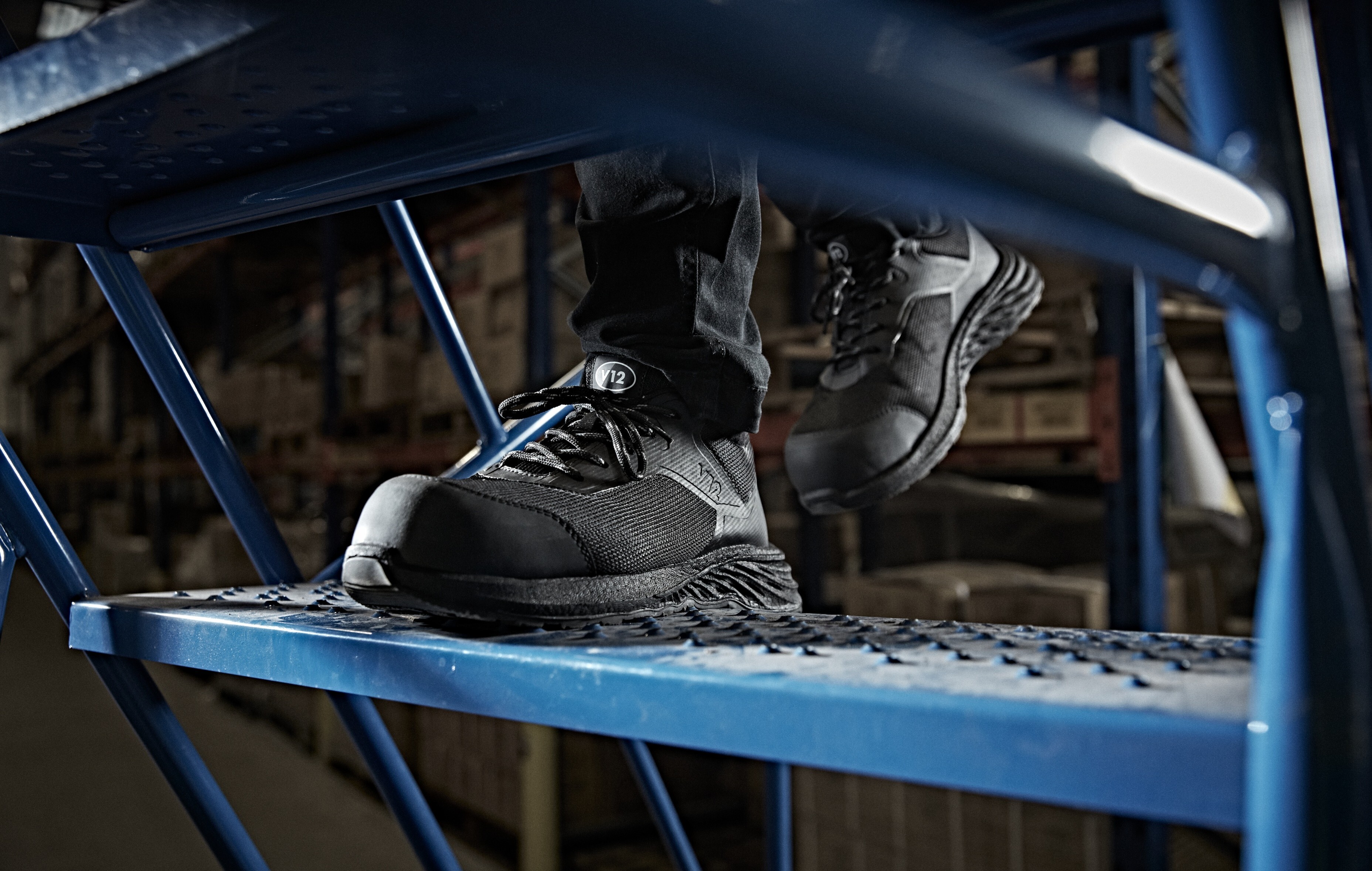A safety boot with an S1 rating provides a level of basic foot safety, but make no mistake, while they might be low down on the spec pecking order, a good S1 boot can still offer reliable protection – and as long as it’s selected for the right job, it’s anything but a compromise.
In this blog, we'll look at what makes a safety boot that's rated 'S1,' and what job roles these features could offer protection for.
What DOES an S1 boot protect you from?
An S1 boot's primary safety feature is to protect the wearer from the impact of falling or dropped objects.
How?
With a toecap tested to 200-joules of impact.
Does toecap material matter?
No – steel or composite, because the toecap will have been tested to the same standards, it will be built to protect the toes.
Other S1 safety features
An S1 boot must also offer anti-static protection between 0.1 and 1,000 megaohms (MΩ). Anti-static footwear prevents the accumulation of static electrical charges in the human body by grounding them. They are designed to safeguard sensitive electrical equipment from damage caused by static shocks, charges, or sparks, so they are relevant for workplaces that manufacture electronic components or environments where static electricity is generated by machinery or appliances. Anti-static boots also offer protection to the wearer in potentially explosive environments where a spark could prove extremely dangerous.
Note: if more stringent protection against electrical hazards is required in a pair of safety boots, it might be advisable to acquire ESD protection. Find out more here.
A piece of protective footwear can only be rated 'S1' if it has energy absorption in the heel. Energy-absorption is when the seat (the heel) of the boot is made of material which prevent injuries from impact loading - the force on our limbs from standing, walking or lifting. Essentially, it’s a shock-absorbing feature.
Finally, an S1 work boot will have resistance to fuel oil as standard.
What does an S1 boot not protect you from?
An S1 boot does not have an anti-penetration insert or midsole, so it doesn't offer protection to the wearer from sharp objects perforating the sole and injuring the foot from below.
It doesn't have cleated outsoles either, which is a more stringent and protruding tread, giving enhanced grip and traction.
So what industry role Is an S1 BOOT GOOD FOR?

Well, quite a few. The common industry people think of when considering an S1 boot is Construction, but that all depends on what type of construction. On an indoor or dry site, then an S1 boot will be more than adequate, but if you’re in the quarrying sector of construction, then you’ll need to move right up the spec ladder and aim for waterproof, ankle protecting and even metatarsal protecting boots to keep you safe. So, it’s not so much about the industry, it’s more about the role.
Here are a few more jobs in safety-critical areas where an S1 boot could prove appropriate.
- Construction
- Warehousing and Logistics
- Manufacturing and Maintenance
An S1 safety style could also be a good fit for those in executive positions whose roles involve either moving from a more office-based environment to a safety-critical area or overseeing production or work on site, such as a civil engineer or an agricultural estate manager. As a result, you'll often find people in these roles wearing S1 safety shoes and boots, to offer the basic protection needed for intermittent or infrequent exposure to hazards.
 Some working in industries such as Farming or certain types of Food Manufacturing also find the most common hazards are related to impact from above rather than underfoot.
Some working in industries such as Farming or certain types of Food Manufacturing also find the most common hazards are related to impact from above rather than underfoot.
In Engineering settings or Food Manufacturing, S1 boots are often used, as they are dry environments, but it's worth pointing out that a lot of engineering or factory settings will have inherent perforation risks such as screws, nails or needles.
In fact, it should be remembered that indoor safety roles aren't by nature necessarily less hazardous - they can still contain a number of perforation and slip risks, plus water exposure, so in these cases, an S1 boot won't be an adequate safety footwear solution.
Pictured: The VC100 Diplomat from V12 Footwear is an executive safety shoe: a classic brogue carrying an S1 spec
S1P safety footwear
When an S1 code features a 'P' beside it, it means the footwear has an additional feature of an anti-perforation insole which protects the underfoot.
Many safety procurers will opt for an S3 boot if toe and underfoot protection is required, but because S3 boots offer water resistance, S1P is a perfect way to protect both areas of the feet in purely indoor or dry environments.
Want to learn about the rest of the safety footwear classifications? Head to this blog and learn about EN ISO 20345 safety footwear standards and codes for both 2011 and 2022 editions.
Pictured: The V2150 BoB Boot - a best-selling S1P sand construction boot from V12
Don't slip up on safety spec
 It's good to remember that safety boots do a huge amount of work from below as well as above - and the stats prove it. HSE figures show well over 30% of all non fatal accidents at work in 2023 were caused by a slip, trip or fall, and there's evidence to suggest that only 1% of these accidents are foot injuries.
It's good to remember that safety boots do a huge amount of work from below as well as above - and the stats prove it. HSE figures show well over 30% of all non fatal accidents at work in 2023 were caused by a slip, trip or fall, and there's evidence to suggest that only 1% of these accidents are foot injuries.
So, whether it's S1 or S7, getting your slip solution right is also paramount. Because slip prevention is now considered such a crucial part of the safety which work boots should offer, all safety footwear tested to the most recent standards (EN ISO 20345:2022) must - as a requirement - come with a non-slip tread.
However, there are a number of grip types available that can be tailored to go beyond a generic non-slip sole, and actually provide traction based on the specific surface type being worked on. Head here to find out more about two revolutions in tread design: the IGSTM and STMTM sole units.
IN CHARGE OF YOUR TEAM'S HEALTH AND SAFETY?
If you are responsible for Health and Safety or procurement and require more information or guidance on the appropriate safety footwear specifications for your team, V12 can assist. With our Foot Health and Safety Assessment, we work with you to establish the best-fit safety footwear for a company’s workplace with:
- An industry-leading audit
- A multi-step safety footwear trial process
- An expert safety footwear recommendation
We have assisted numerous companies in selecting the appropriate footwear that meets their safety, comfort, and budgetary needs, so contact us by clicking below to discover the benefits.
Are you a safety supplier not currently offering V12 footwear? Click here to sign up!






